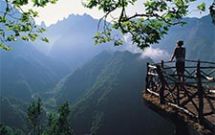Caramulo, Açor and Lousã – other mountain ranges to explore
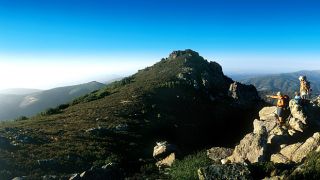
Don't miss
- try the Caramulinho aerial slide
- take a raft or canoe down the streams of Serra do Caramulo
- marvel at the Fraga da Pena waterfalls
- admire the plant life at Mata da Margaraça
- ride down the Serra da Lousã hillsides on a mountain bike
- climb up the Penedos de Góis
- have a swim at one of many river beaches in the region
- trek along the “Schist Trails”
The most common image of Centro de Portugal is of nature in its purest state, massive mountains and many rivers in deep valleys, creating landscapes of great beauty.
The highest and most famous mountain is Serra da Estrela, but Centro de Portugal also has others that are worth exploring.
These are places to discover unhurriedly, breathing in the fresh air and enjoying the preserved nature on quiet walks or in more adrenaline-pumping activities.
But there are more adventures to be had in these mountains, amid pristine landscapes and the silence of nature. There’s nothing better for the soul.
To the north, Serra do Caramulo, whose highest point, Caramulinho, is at 1075 metres above sea level and offers fine views over the whole region.
Classified as a protected landscape, Serra do Açor is amazing from the top of its 1349 metres. The terraces, the water running in channels and the impressive wood, Mata da Margaraça make it a quite different kind of place
To the west, Serra da Lousã has some real scenic treasures and monuments and is also a choice location for radical sports.
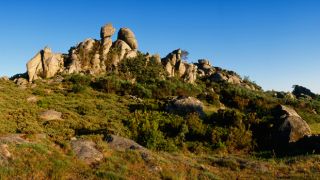
To the north, Serra do Caramulo, whose highest point, Caramulinho, is at 1075 metres above sea level and offers fine views over the whole region. It’s also very much appreciated by fans of the aerial slide, which covers a distance of 300 metres, one of the largest in Portugal, providing a dizzying flight over the breathtaking landscape of the Besteiros Valley. Nearby, another place where you can experience that feeling of flying without wings is the Viveiros Slide, about 150 metres long, which offers an exciting flight between the trees.
The streams of crystal clear water running down the mountain sides are excellent for rafting and canoeing, with exciting descents down the rapids that circumvent natural obstacles and pass through "narrows". There are also ancient trails for walking and enjoying the wild flowers that emerge in the spring throughout the mountains.
Serra do Caramulo also invites you to rest in the hot springs that were used as long ago as Roman times, and are a place for the purification of body and mind.
Find out more:
Caramulo
http://www.visitcaramulo.org
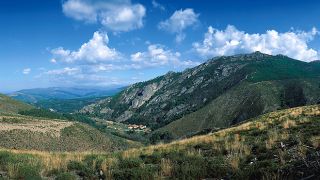
Classified as a protected landscape, Serra do Açor is amazing from the top of its 1349 metres. The terraces, the water running in channels and the impressive wood, Mata da Margaraça, displaying the original vegetation of the region and classified as a Biogenetic Reserve, make it a quite different kind of place which, when spring arrives, is covered with pink and lilac heather and broom, creating a splendid panorama.
The sound of running water follows you everywhere and is an irresistible invitation for a swim in the pools and river beaches. One place not to be missed is the fabulous Fraga da Pena waterfalls.
Schist is the most abundant rock on the landscape and it is used in the construction of the houses in typical villages like Piódão, Benfeita and Fajão, which are also essential places to visit, to glimpse the habits, customs and traditions of the people who live here.
Find out more:
Paisagem Protegida da Serra do Açor
http://www.icnf.pt
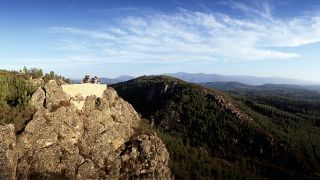
To the west, Serra da Lousã has some real scenic treasures and monuments and is also a choice location for radical sports. You can start less strenuously by hiking, but you can also venture into mountain biking, seeking out some different tracks, downhill descents, single-track or drops... these slopes are perfect for downhill and guarantee some moments of pure adrenaline. There are several mountain bike centres, scattered around the mountain, that provide full support to cyclists.
You will encounter a number of streams during your trip that have their sources here and flow into the Rivers Zêzere and Ceira, via small waterfalls ideal for a refreshing pause. On the humid hillsides, there are remnants of the evergreen forest of holly, laurel, oak and chestnut. You can hear cuckoos, see jays flying by, and perhaps come across a buck or a deer, which you can observe more calmly in the Biological Park.
The landscapes are breath-taking too – from Alto do Trevim, at 1204 metres, or the Penedos de Góis with tracks for access by 4x4 vehicles, the schist mountain tops offer views over majestic scenery. From Castelo de Arouce, the Lousã castle, you can see small chapels scattered across the mountain, such as the Senhora da Piedade Chapel, right on the cliff top, and for those who enjoy real thrills, Cabeço da Ortiga, at an altitude of 928m, guarantees an unforgettable paraglide flight.
Find out more:
Visit Centro de Portugal
www.visitcentro.com
Parque Biológico da Serra da Lousã
https://parquebiologicoserralousa.pt/








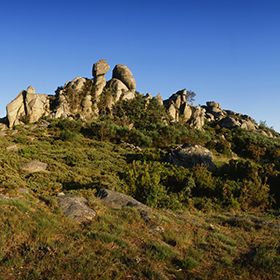
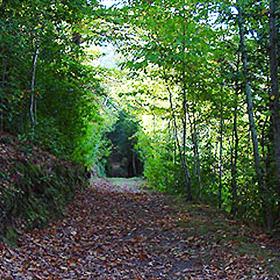
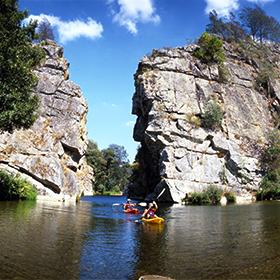

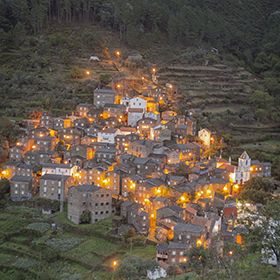



 Explore
Explore 




 Remember and Share
Remember and Share 


